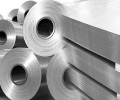[ad_1]
Attention then quickly turned to energy. Soaring gas and electricity prices have led to significant cost increases, especially for electric arc steelmakers. Several steel producers have announced their intention to implement new surcharges, to cover escalating energy and other costs. This went against the general trend of the market and therefore confused decision making.
In addition to energy, these proposals cover surcharges for transportation, scrap, sustainability and green steel. Other factories have adopted the traditional method of increasing bid prices to cover increased costs.
The principle of surcharges is well established in certain steel industries, in particular the stainless steel market. They generally relate to alloying elements, traded on world markets and subject to constant fluctuations. The contracts are generally concluded with a base price, fixed at the time of the order, increased by an alloy supplement, applicable at the time of delivery. These can often move in opposite directions.
Individual producers calculate the “extra†each month, based on published alloy indices, and advise customers accordingly. The mark-up is then applied to deliveries for the following month. The same pricing structure is included in the sales invoices from distributors during the same period.
Previous efforts to introduce surcharges in the carbon steel industry have met with very little success. In general, these were attempts to impose immediate charges on existing contracts, to cover rapid increases in the cost of raw materials, such as scrap metal. These are different from the dimension and grade extras, which are incorporated into the price agreed at the time of ordering.
Currently factories offer surcharges on new orders only. It’s a less aggressive approach and avoids breaking agreements. However, it is far from clear whether the new orders include those placed under existing framework contracts, as they exist in the automotive sector. Inflated prices can be borne by a limited proportion of buyers. It also raises the question of incorporating today’s high costs into future supplies when the market might be very different.
No two factories have exactly the same cost base. The blast furnace sector is currently less affected than the EAF steel industry, by high electricity prices. This makes a uniform approach, even within the same group, difficult to implement.
Ultimately, the effective price is the key. Most buyers will look at the bottom line, however it is calculated, and place orders accordingly. Niche product offerings may be able to reflect these additional costs. By contrast, with or without surcharges, commodity prices will inevitably tend towards market value.
Source: MEPS
[ad_2]

